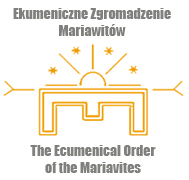Erfurt , stolica Turyngii, interesowała nas przede wszystkim jako siedziba dwóch klasztorów – augustianów , do którego w 1505 r. wstąpił Marcin Luter, i dominikańskiego , którego przeorem był w latach 1294-1298 słynny średniowieczny filozof, kaznodzieja i mistyk, Mistrz Eckhart. Trzeba jednak dodać, że również niezależnie od tych miejsc, Erfurt to po prostu bardzo ładne i warte zobaczenia miasto. / We were interested in Erfurt, the capital of Thuringia, most of all as the seat of two monasteries – the Augustinian one, which Martin Luther joined in 1505, and the Dominican one, whose prior in the years 1294-1298 was the famous medieval philosopher, preacher and mystic, Master Eckhart. It should be also said that even apart from these places Erfurt is simply a beautiful city worth visiting.
Widok z dziedzińca klasztoru dominikanów na erfurcką katedrę. / The view from the Dominican monastery’s yard on the Erfurt’s cathedral.
Jedna z ulic starego Erfurtu. / One of old Erfurt’s streets.
Przed wejściem do klasztoru augustianów. To w tym miejscu Marcin Luter po raz pierwszy przekroczył klasztorne progi. / In front of the Augustinian monastery’s entrance. It was in this place that Martin Luther first entered the monastery.

Marcin Luter jako mnich augustianin. / Martin Luther as an Augustinian monk.
Dziedziniec klasztorny. / The monastery’s yard.
Krużganek. / The cloister.
Przed wejściem do celi Lutra. Przyszły Reformator zamieszkiwał ją tylko przez stosunkowo krótki czas, bowiem klasztorna reguła nakazywała, aby bracia wymieniali się celami, dlatego aby nikt nie mógł nazwać żadnego miejsca w klasztorze swoim własnym. / In front of Luther’s cell. The future Reformer inhabited it only for a relatively short time, because the monastery’s rule obliged the monks to exchange their cells, so that no one could claim any place in the monastery their own.
Tablica upamiętniająca Mistrza Eckharta . Można powiedzieć, że tutaj zamyka się tematyczne koło naszej podróży. Jakub Boehme najprawdopodobniej nigdy nie słyszał o mistrzu Eckharcie, jednakże pewne myśli średniowiecznego przeora erfurckich dominikanów pojawiają się, zresztą między innymi za pośrednictwem Marcina Lutra, u filozofa ze Zgorzelca. / The plaque commemorating Master Eckhart. We could say that the thematic circle of our journey has closed there. Jakob Boehme had most probably never heard of Master Eckhart, but certain thoughts of the medieval prior of the Erfurt’s Dominicans are to be found, by the way also by the influence they had on Martin Luther, in the legacy of the philosopher from Görlitz.
Predigerkirche – były kościół dominikański, obecnie siedziba parafii ewangelickiej. / Predigerkirche – former Dominican church, currently used by a Lutheran parish.
Wnętrze kościoła. / The church’s interior.
Młodzi członkowie parafii bawią się na klasztornym dziedzińcu, zapewne nieświadomi tego jaką rolę odegrało to miejsce, a zwłaszcza Mistrz Eckhart, w historii Kościoła. / Young parishioners playing on the monastery’s yard, most probably unaware of the role this place, and especially Master Eckhart, played in the church’s history.
Wieża klasztorna. / The monastery’s tower.
Po nabożeństwie niedzielnym w jednym z klasztornych pomieszczeń, które w zimie spełnia rolę kaplicy. / After the Sunday service in one of the monastery’s rooms that is used as a winter chaple.





A beautiful monastery in a beautiful city! I wonder what would have happened if Luther had become a lawyer like his father wanted.